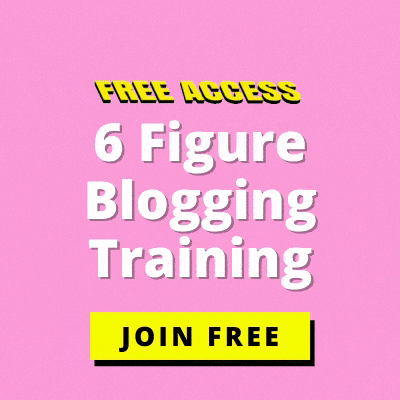Your debt is growing, but your income stays alarmingly small?
You have no idea how you can make ends meet and pay off a past financial mistake that keeps getting worse?
You feel doomed and your anxiety levels are rising dangerously high every time you get close to checking your bank statements.
Do not despair. I am here to help you get on the road to financial freedom by taking control of your debt even with a small income.
Table of Contents
1. Acknowledge and accept
I am going to be very frank with you here, before you can start paying off your debt two things must happen for it to actually work: (1) acknowledge that your have debt and (2) accept that you need to do something about it.
If you are ready and willing to look at the cold hard truth, then the first step is to make a list of all your debts. List what type of debt you have, the amount, the interest rate percentage, the minimum payment amount and payment due date.
Do that for all of them, no exception. Then prepare yourself for a lifestyle change and the prospect of putting a lot of patience and hard work into getting those creditors out of your life.
2. Financial Buffer
Before you jump in with both feet, ready to make those payments to your credit card and line of credit, create a little financial buffer in a separate savings account for emergencies.
In a separate account it is out of sight and reach in case the urge to shop gets too overpowering. At the same time the money is there in case you need it for a bigger grocery bill one week, or your glasses broke or your child chipped a tooth during gym class.
Life is full of surprises, sadly some of them can be expensive. And I’m not talking about a few thousand dollars, if you had that much money to put aside, you probably wouldn’t be in debt to begin with.
I merely referring to a few hundred dollars, try aiming for about $500, that could be the rain when you need it.
3. Have a Budget
Now you are ready to start tackling your debt. First up, make a list of all of your fixed expenses, those that you need to pay every month, like rent, groceries, transportation and your debt payments.
These are the bills you cannot cut or avoid.
During my research into this matter and my own experiences I have found two strategies to create a budget.
The first one is based on the premise of your minimum needs. Make a budget that includes your basic needs in order to live, also known as a bare bones budget. This goes hand in hand with cutting down expenses, which I will talk about in just a second.
The second way to create a budget is called zero-sum budget. This means every dollar of your income has a designation so that at the end of the month you have no money left over.
It is a weird way to budget when you first start, but it’s not like you are losing the money, you are simply giving every dollar its place: groceries, rent, transportation, debt payments and savings.
If you want to budget simply without confusing software, you can grab a copy of our $5 Printable Budgeting Binder!
4. Cut Expenses
Now this is where the fun stuff begins. Finding expenses to cut and realizing that you are sticking it to the big company for charging you an arm and a leg to watch cable TV, or work out once a week in a very judgemental feeling gym or finally cancelling the subscription to that paper that hasn’t really reflected your ideologies is extremely satisfying.
Ask yourself, if you really need to buy a book every week to keep up with your reading, especially when your local library is well-stocked and free of charge.
Do you really need to wait in line for 15 minutes to buy your coffee at one of the major coffee shop chains just to pay $7 or more for a cup of your favourite joe you can easily make at home? You would save time and money.
Do you really need that land line, if your cell phone is pretty much attached at your hip at all times?
When I was trying to cut unnecessary expenses, I became shrewd, evaluating every dollar I was spending that wasn’t going towards paying my student loan, rent or groceries.
It is an exhilarating feeling when you realize that next month you are saving $30-$100 simply by cutting out something you really don’t need.
You can check out more ideas on how to cut expenses and live frugally in our article, How to Live Happily on Less!
5. Ditch the Minimum
This is something I had to learn the hard way and that made me very frustrated. When you only pay the minimum amount on any credit card or loan, you will have a very hard time paying it off completely.
It feels like being stuck in a hamster wheel. You go around and around, put a lot of effort into making those monthly minimum payments, like the bank tells you to do, but you can barely see a difference in your statement from month to month.
Here is the secret to this mystery: the minimum just about covers the monthly interest rate the bank charges you per month plus $10.
So, by paying the minimum amount you cover your bases by not getting charged any penalty fees, but it’s never enough to make a real dent into your actual debt.
Your new budget will help you identify how much money over the minimum amount you will be able to pay in order to actually decrease your debt and free yourself of this burden.
6. Increase your Income
You have your budget, you are sticking to it, but it would still be beneficial to have a little bit more money make its way into your pockets.
For starters, if you have a car that sits in the garage for most of the week, because you take public transportation or even a second car that gets used far less than is justifiable, sell it.
The sale of your car brings you a one-time income, but also allows you to cut ongoing fixed expenses like gas, maintenance, insurance and parking fees.
If you don’t or can’t sell your car, look into driving services such as Uber or Lyft, they are flexible with the hours you can work and it will provide you with a second income.
You can also work over time at your main job (if overtime is paid) or asked for extra shifts. You can look for a second job on the weekend or start a side hustle by doing freelance work.
Here’s a few articles that can help you find creative ways to make more money:
- Non-Computer Side Hustles to Increase Your Income
- 10 Awesome Work From Home Jobs
- How to Make Money on Poshmark
- How to Make Money Walking Dogs
7. Give yourself an Allowance
A tighter purse strings lifestyle can seem a little like a punishment. Whatever the reason for your current debt situation, it does you no good denying yourself everything.
If you work hard, stay on budget and make smart choices from here on out, you are on the right track and life shouldn’t be void of a coffee date with your best friend or a date night with your significant other.
Designate an amount for your allowance per week or month, make it a fixed amount that has its place in your budget and stick to it.
Remember when we were kids and had to save our allowance to buy the newest Super Mario game for our Nintendo or Game Boy? It felt like hard work, but the reward of finally being able to buy that game made it so much more special.
This is the attitude you need to adopt again. It is difficult being so strict with yourself. You work hard and deserve to treat yourself, but it should not get into deeper into debt.
8. Identify Your Habits
I never really thought about this strategy until it was pointed out to me very recently.
You figured out on what you are spending money you don’t have, now it’s time to figure out why you are spending money you don’t have.
Is it because you feel unhappy or unfulfilled in a part of your life and grabbing your laptop to make some late night Amazon purchases just make you feel a little better?
Do you like collecting things, but aren’t as patient as you should be by not turning your love for collecting a certain item into a long lasting hobby?
Or do you just don’t know how to cook and eat out a lot?
Talking to a friend or family member or even counsellor can help you identify why you are feeling unhappy and give you a helping hand in how to change that aspect in your life.
Also, it’s time for you to learn how to cook, this way you are too busy following recipes to spend your time and money on collecting items you really don’t need.
9. Have a Strategy
So, you created a budget, found some extra income and identified your weaknesses. Perfect.
Now, you need to take a look at all of your debt and decide what strategy works best for you to pay off that debt.
I have found two ways to do so. The first is called the avalanche and says to concentrate on paying off the debt with the highest interest rate percentage first.
Once that is accomplished you allocate the same amount of money you have budgeted to the debt with the second highest interest rate. And then the next highest interest rate.
The good thing about this method is that you save money by eliminating the interest rate charges of the biggest portion of your debt first.
The second method is the debt snowball method. With this method you pay off your smallest debt amount first and work yourself up to the biggest one.
It has the benefit of giving you small successes along the way every time you finish paying off a small debt. The downside of this method is you keep paying large interest fees on your largest debt.
In some cases it makes sense to finish the smallest debt pile first, especially if you need to feel less like you are drowning.
It really depends on what works best for you and what would give you the greatest motivation to keep saving and making smart financial decisions.
10. Cash vs Plastic
We have gotten so used to paying everything with our debit and credit cards and even a digital wallet service like Apple Pay. It is so easy to lose track of your spending. Add in the bank’s overdraft option and we can be totally screwed.
I know there are benefits to using your card like cashback points and rewards points and every other kind of point you can imagine.
But I miss the good old days when I would walk around with a wallet in my purse so stocked full with loose change that would add up to $20.
I knew, if I ran out of the money in my wallet then that was it for me and my shopping spree at the mall.
The visual reminder of how much money I owned was a good exercise for me to make decisions of future purchases and savings.
Sometimes it’s a good idea to take a step back and get that cash from your bank and leave those debit and credit cards at home.
If things get really bad, you can always cut up those credit cards to completely eliminate the temptation.
11. Refinancing, Debt Consolidation and Debt Transfer
Here is what I did with my students loans. I had two separate loans with really bad interest rates. I was stuck. Even paying more than the minimum payment amount each month barely made a difference.
My bank had a great interest rate for six months on the credit line I never used. So, I transferred my student loans to my credit card and in the process consolidated my debt, which made managing it much easier.
Debt transfer to a different credit card or credit line with a better interest rate is certainly an option when taking control of your debt.
Debt consolidation like I did is another good option to consider. Talk to your bank to ask for products and services that can make this a viable option for you.
Also, refinancing might be an option for you. Again, talk to your bank to look at your options and the products that could help you cut down your debt.
I have read quite a few articles that also encourage talking to your creditors about reducing your monthly payments or your interest rate.
If you are in good standing with your credit score and always pay your bills on time, they might be persuaded to help out.
Final Thoughts
When money is tight and debt is piling up it can feel like you are drowning, the happiness gets sucked out of your days and everything becomes a chore. It takes over your life.
Take matters into your own hands and follow the steps I have outlined above to get you started on reclaiming your financial freedom and happiness.
You got this. It only takes one step at a time.




Leave a Reply